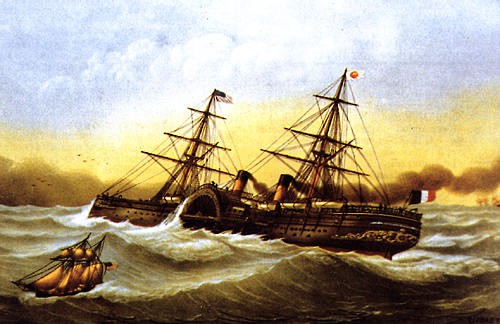Set in a beautiful Renaissance house surrounded by an Italian-style garden, the Amboise Postal Museum traces the history of postal services in France. In fact, the word 'post' comes from the posts or stations where horses were kept for sending on the mail, newspapers and printed matter in general. Later on, there were also to be the air and sea postal services.
The ground floor explores the history of mail delivered on horseback. The foundations of the postal service were laid in the 15th century when the Master of the Post set up the first post-houses – the stimulus which prompted developments in road travel.
At these houses, the messengers would rest and change their horses. Here too the first stagecoach companies found the horses they needed for their long journeys across France. As a result of a law of 19th Frimaire Year VII (1798), every post-house with horses had to keep a register of order and discipline, in which were recorded the remarks of the Inspectors of the Post and the complaints of passengers. The museum holds the register for Amboise and the first page records the remarks for the year 1803. There were four postillions, and horses with evocative names – four Malliers (Mail horses), four Bricolliers (Harness horses) and three Bidets (Nags). In 1858, France had about 1400 post-houses, varying in distance from each other 10 km to 30 km. In these ground-floor rooms, there is in addition a magnificent collection of postillion plaques, notably a series of eagles from the First Empire, as well as paintings by Géricault, Carle Vernet, Alfred de Dreux and Rosa Bonheur. Items also on show are a model of a stage coach, saddles, horse bells, and harnesses.
On the first floor, the theme is the history of letter post, with an exhibition of many different sorts of mail and the methods for delivering them. Official correspondence was greatly improved by Claude Chappe's invention, the optical telegraph. Private letters were only authorised in 1850. A large section is given over to the armed-forces post created by Louvois but whose legal organisation was settled during the Revolution and completed in 1809 by Lavalette. Renowned for its efficiency and speed as a result of its despatch riders, the military post of the Empire is represented by many different items, namely arms, mission papers, engravings, paintings etc. Also in this part of the exhibition there is a presentation of non-French postal services, transport systems and the animals used for the service. Furthermore, there are cases containing furnishings and fittings of coaches which belonged to Napoleon I and also harnesses once used by Napoleon III.
The rooms on the second floor are given over to the development of post by sea. Regular postal services were not to be established until the 19th century and the arrival of the steam. One of the first half- steam, half-sail boats Le Paris belonged to the Pereire brothers, the founders of the General Maritime Company in 1855. An agreement signed with the State in 1860 allowed the Pereire company to have transatlantic lines, from Le Havre to New York and from Saint-Nazaire to the Antilles, for twenty years. In exchange the company agreed to build every three years the fourteen steamers needed to provide the postal service. In 1861 the company changed its name to the General Transatlantic Company, and the exhibits here (posters, engravings and illustrations of the liners Le Washington, Le Pereire, Le Napoleon III, etc.) are all of this company from this period.
Keen to maintain its influence in North Africa and the Far East, the government of Louis-Philippe commissioned the private company, Les Messageries nationales, to run its sea postal service. This company, which became the Messageries imperiales in 1853, set up a postal line between France and to South America using the vessel La Guienne. In 1861 there were sixteen ships in the postal fleet and the lines functioned up to 1972.
Karine Huguenaud
Trans. P.H.
Museum closed, the collection is at the musée de la Poste in Paris.


